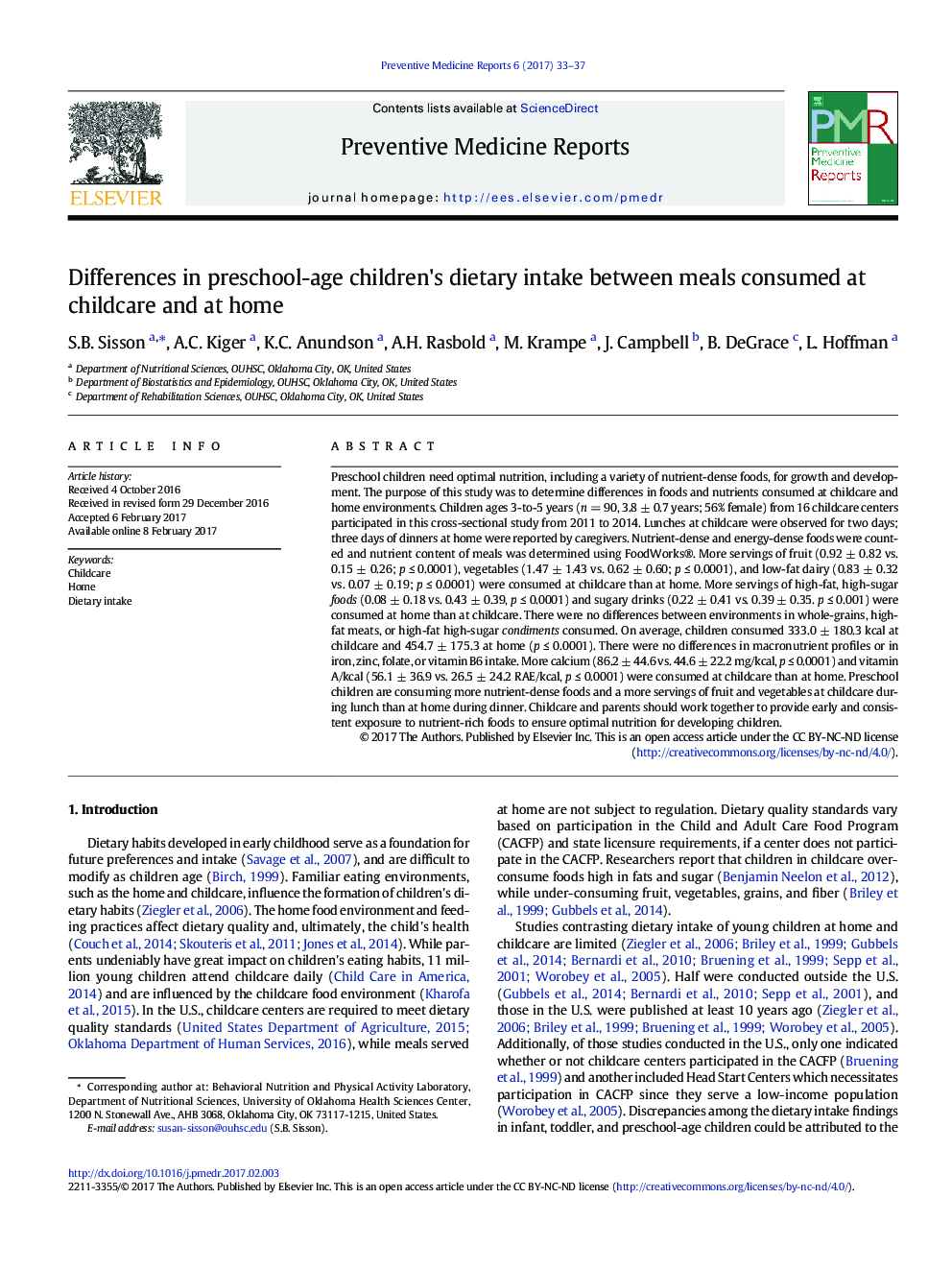| Article ID | Journal | Published Year | Pages | File Type |
|---|---|---|---|---|
| 5723639 | Preventive Medicine Reports | 2017 | 5 Pages |
â¢More fruits, vegetables, and low fat dairy are consumed at childcare than at home.â¢More high-fat high-sugar foods and drinks are consumed at home than childcare.â¢More energy is consumed at home than childcare.â¢Childcare and families can work together to ensure optimal nutrition for children.
Preschool children need optimal nutrition, including a variety of nutrient-dense foods, for growth and development. The purpose of this study was to determine differences in foods and nutrients consumed at childcare and home environments. Children ages 3-to-5 years (n = 90, 3.8 ± 0.7 years; 56% female) from 16 childcare centers participated in this cross-sectional study from 2011 to 2014. Lunches at childcare were observed for two days; three days of dinners at home were reported by caregivers. Nutrient-dense and energy-dense foods were counted and nutrient content of meals was determined using FoodWorks®. More servings of fruit (0.92 ± 0.82 vs. 0.15 ± 0.26; p â¤Â 0.0001), vegetables (1.47 ± 1.43 vs. 0.62 ± 0.60; p â¤Â 0.0001), and low-fat dairy (0.83 ± 0.32 vs. 0.07 ± 0.19; p â¤Â 0.0001) were consumed at childcare than at home. More servings of high-fat, high-sugar foods (0.08 ± 0.18 vs. 0.43 ± 0.39, p â¤Â 0.0001) and sugary drinks (0.22 ± 0.41 vs. 0.39 ± 0.35. p â¤Â 0.001) were consumed at home than at childcare. There were no differences between environments in whole-grains, high-fat meats, or high-fat high-sugar condiments consumed. On average, children consumed 333.0 ± 180.3 kcal at childcare and 454.7 ± 175.3 at home (p â¤Â 0.0001). There were no differences in macronutrient profiles or in iron, zinc, folate, or vitamin B6 intake. More calcium (86.2 ± 44.6 vs. 44.6 ± 22.2 mg/kcal, p â¤Â 0.0001) and vitamin A/kcal (56.1 ± 36.9 vs. 26.5 ± 24.2 RAE/kcal, p â¤Â 0.0001) were consumed at childcare than at home. Preschool children are consuming more nutrient-dense foods and a more servings of fruit and vegetables at childcare during lunch than at home during dinner. Childcare and parents should work together to provide early and consistent exposure to nutrient-rich foods to ensure optimal nutrition for developing children.
